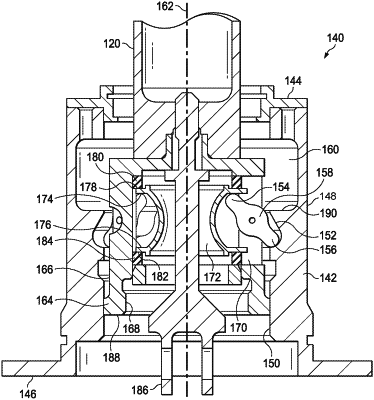| CPC F16H 57/022 (2013.01) [B64D 35/00 (2013.01); F16H 2057/02043 (2013.01); F16H 2057/0221 (2013.01)] | 10 Claims |

|
1. A method of locking and disengaging a driveshaft, comprising:
providing a cam-locking system, comprising:
a housing having a first end, an opposite second end, an interior surface extending from the first end to the second end, and a central axis;
a cam carrier located at least partially within the housing, the cam carrier being configured to translate relative to the housing along the central axis, wherein translation of the cam carrier is configured to cause translation of the driveshaft; and
a cam rotatably coupled to the cam carrier about a cam rotation axis longitudinally disposed between a first cam end of the cam and a second cam end of the cam;
advancing the cam carrier along the central axis from a disengaged position to a first location;
backing the cam carrier from the first location along the central axis until contact between the cam and the interior surface arrests the backing at a locked position;
advancing the cam carrier from the locked position along the central axis to a second location past the first location; and
backing the cam carrier from the second location along the central axis past the locked position to the disengaged position;
wherein the cam remains fully disposed within an interior portion of the housing;
wherein the cam is disposed so that no portion of the cam is intersected by the central axis and so that the cam rotation axis is not intersected by the central axis; and
wherein the cam rotation axis is disposed substantially centrally between the first cam end and the second cam end.
|